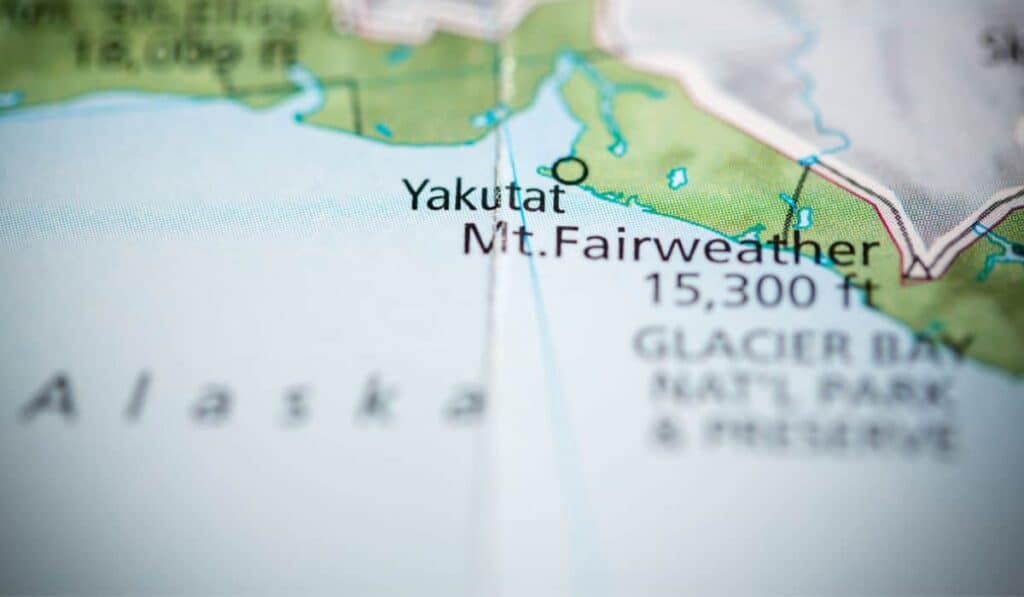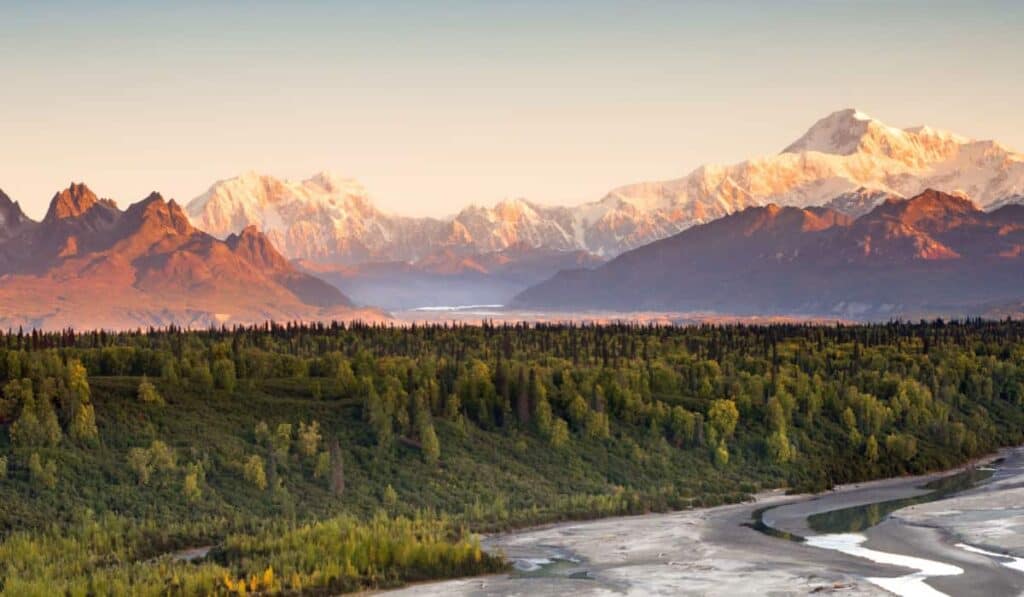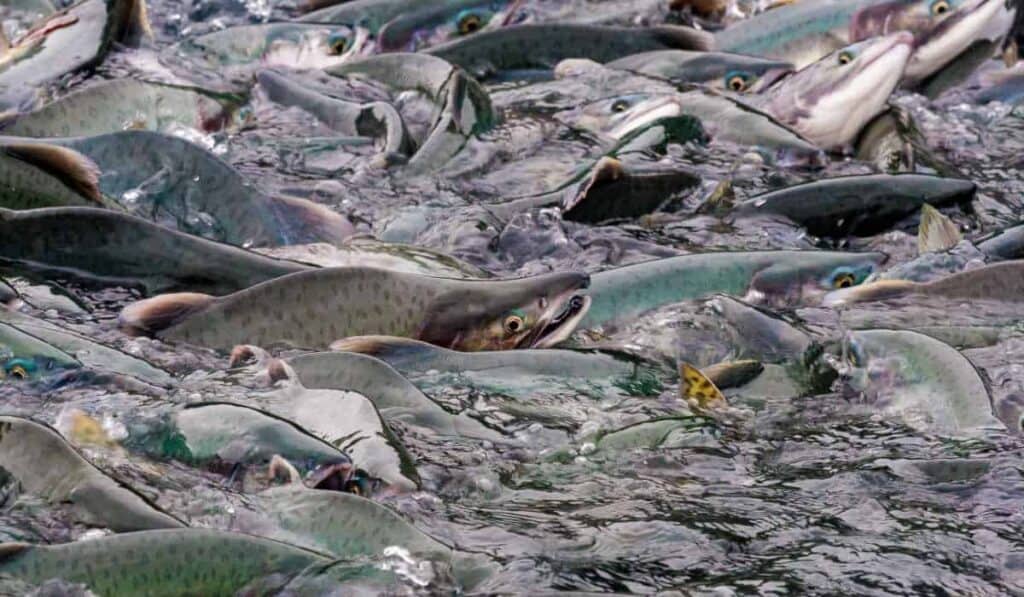Ketchikan is a great stop on any Alaskan cruise, with many beautiful sights to see. It should definitely be part of any itinerary that includes Southeast Alaska.
If you’re planning on visiting, you’ll want to know what the weather conditions will be like, so you can make sure you’re prepared.
Let’s take a look at the average temperature by month, the types of precipitation, and other weather-related factors you should expect.
How Hot or Cold Does It Get in Ketchikan?
The hottest months in Ketchikan are July and August, where the average highs will be around 64 degrees Fahrenheit or 52 degrees Celsius.
The coldest months are December and January, where you can expect highs of around 39 degrees Fahrenheit or 31 degrees Celsius.
Ketchikan, being one of the most southeasterly cities in Alaska, has a very moderate climate compared to the rest of the state. In fact, the record low ever seen in the city is only -7 Fahrenheit.
The record high temperature for Ketchikan was 96 degrees, all the way back in 1913. It has not broken 90 degrees Fahrenheit since 1915, over 100 years ago!
How Much Rain Does Ketchikan Receive?
Ketchikan is an extremely rainy city, with an average rainfall of about 141 inches of rain every year. For comparison, the national average is only 38!
In fact, “extremely rainy” is a bit of an undersell. It is the third-wettest city in The United States, behind only two other Alaskan cities: Whittier and Yakutat.
October is the rainiest month, with an average of 28 days of rain and nearly 12 inches every year.
June is the driest month, however, with only 4.68 inches of rain occurring over a period of about 22 days.
Even in June, it rains about two-thirds of the time! Bringing a hat or an umbrella for your trip is highly recommended.
How Much Does It Snow in Ketchikan Every Year?
Perhaps the most shocking fact related to the weather in Ketchikan is that it doesn’t actually snow as much as you’d expect for a town in Alaska.
Ketchikan receives an average of 27 inches of snow every year, which is slightly below the national average of 28 inches.
I can’t find any data that explicitly states it, but I’m told by friends in Ketchikan that they also receive other forms of frozen precipitation as well.
I assume the snow figure also includes hail, sleet, and the rarely mentioned other type called “graupel.”
Graupel is a smaller, softer version of hail and its name comes from a German word that refers to small pieces of pearl barley because of their similar appearances.
You can tell the difference between graupel and hail because hail almost always comes exclusively during thunderstorms, whereas graupel can fall at any time.
How Much Sun Does Ketchikan Get Every Year?
Despite what some people in Southeast Alaska believe sometimes, the sun actually does exist and can be seen in Ketchikan on occasion.
I say “on occasion,” because there are roughly 100 sunny days per year. The national average is 205, making Ketchikan a very cloudy place.
What Should I Expect During My Visit?
Based on all of this information, I’m going to recommend bringing a jacket and a hat, at the very least. You may also want an umbrella as well.
You should also be prepared for some wind, which most places don’t mention, but just like the rest of Southeast Alaska, you’re likely to encounter some wind.
I just checked the current weather in Ketchikan as I’m writing this and there are currently winds of 16 miles per hour. It hit 25 mph just a few hours ago.
The amount of wind is very hard to quantify since it isn’t as easily measured as rainfall or snow accumulation.
That said, Ketchikan sees the most wind in January and the least wind in July, which is great news for cruise ship passengers.
Still, the least number of windy days doesn’t mean you shouldn’t prepare for it on your cruise, since winds can still hit a six or a seven on the Beaufort Wind Force Scale.
If it is windy, don’t worry. A hurricane is a 12 on the Beaufort scale, so the wind will be very annoying, but it isn’t likely to damage any property.
It does mean, unfortunately, that your umbrella is not going to work, so you’ll want to check the weather and wind forecasts before you disembark from your ship, if that’s how you choose to go.
Final Thoughts
Overall, Ketchikan is a windy, rainy, and mostly cloudy city, although the summer months tend to have better weather.
If you’re planning an air excursion, perhaps to see some bears or other wildlife, you should be aware that when the weather gets bad enough, float planes are unable to fly and your air trip may be canceled.
That’s common all over Alaska with small planes. A friend of mine once got stuck in one of the smaller towns for five days before the weather was good enough to fly.
As Alaskans, we’re fairly used to it at this point and often forget to mention it as a possibility, but I should also note that bad flying weather is far more common in winter than it is in summer.
As long as you’re prepared for any weather conditions, you’ll have a great time in Ketchikan. We can’t wait to see you on your next visit!







